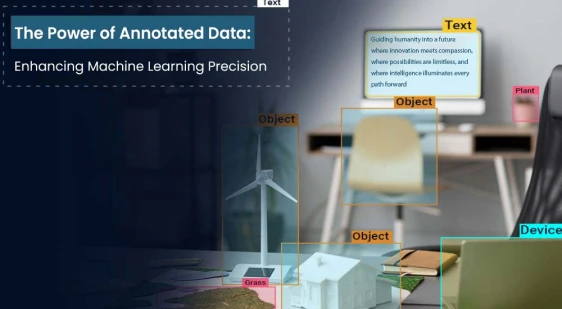Annotated data is the essential of modern machine learning. It transforms raw, information into valuable insights, enpower models to learn, interpret, and make precise predictions. This process is vital for better model accuracy and efficiency, assure that the AI applications we rely on function seamlessly.
What is Data Annotation?
This process, known as branding, involves human analysts adding relevant back up to text, images, videos, and other data types. These labels can range from class emotions in text, and identifying objects within images, to bounding box annotations in videos for autonomous vehicle training.
The Role of Machine Learning
Machine learning algorithms learn from Data Annotation. This is where annotated data comes into play, serving as a guidebook that helps machines learn patterns, recognize different entities, and make informed decisions.
- Improved Accuracy – The precision of a machine learning model heavily relies on the quality and relevance of the training data.
- Faster Learning – By providing clear, labeled examples, annotated data can accelerate the learning process of machine learning models. This structured approach to training data allows models to quickly identify patterns and apply these learnings to new, unlabeled data.
- Enhanced Contextual Understanding – Data Annotation helps machine learning models grasp the context and nuances of the data they’re analyzing.
Enhancing Machine Learning Precision
The integration of high-quality data annotation into machine learning training processes is crucial for developing highly precise and reliable models. Here’s how annotated data is transforming the precision of machine learning models:
- Overcoming Data Scarcity and Bias – Data Annotation allows for the creation of balanced datasets that represent diverse perspectives and scenarios.
- Continuous Learning and Adaptation- Machine learning models can continue to improve and adapt over time with the ongoing addition of freshly annotated data. This ensures that models remain accurate and relevant, even as the world and its data change.
Applications of Annotated Data in Machine Learning
Computer Vision
In computer vision, annotated data is indispensable. From autonomous vehicles and facial recognition systems to medical imaging, high-quality image annotations enable models to detect and classify objects with high precision.
Natural Language Processing (NLP)
Data Annotation plays a pivotal role in natural language processing. Annotated datasets allow NLP models to understand and process human language, leading to more accurate and context-aware applications like chatbots and virtual assistants.
Speech Recognition Data Annotation
Speech recognition systems require annotated audio data to transcribe spoken words accurately. This involves labeling audio clips with corresponding text, identifying speaker boundaries, and tagging emotions or accents. Annotated speech data enhances the model’s ability to recognize and interpret diverse speech patterns, improving the user experience in voice-activated applications.
Conclusion
The power of annotated data in enhancing machine learning precision is a cornerstone of AI innovation. Data Annotation enables the development of intelligent, reliable, and effective AI systems that are transforming industries. As we continue to advance in the field of AI, the role of expertly annotated data in achieving accurate, efficient, and adaptable machine learning solutions becomes increasingly paramount.







